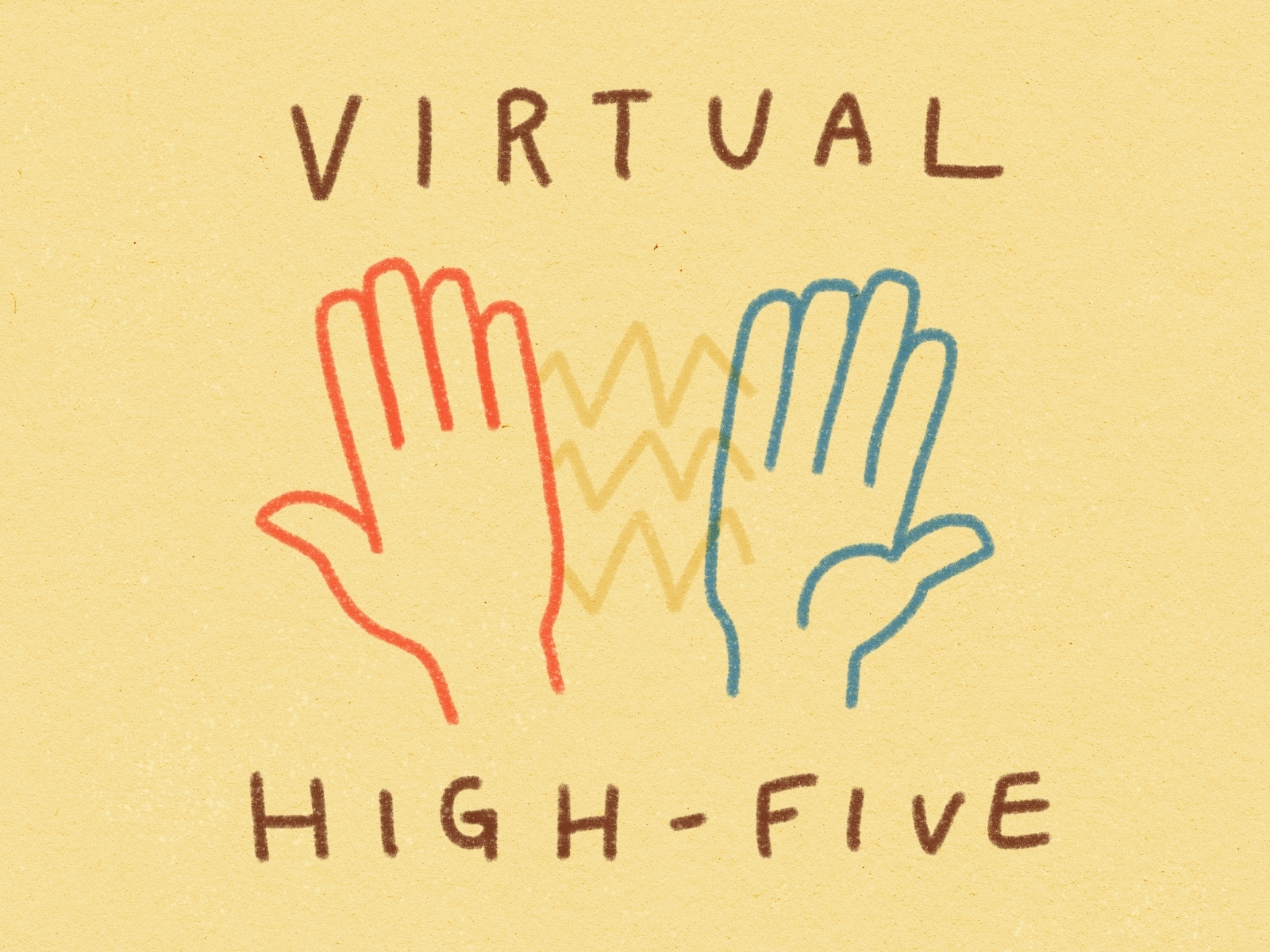

Brown came to play! And they're giving him the high-five handshake. During a telecast of a 1980 game, announcer Al McGuire shouted: "Mr. High fives can be seen in highlight reels of the 1978–1979 Louisville team. Up high." Brown thought, "Yeah, why are we staying down low? We jump so high," raised his hand and the high five was supposedly born. Forward Wiley Brown went to give a low five to his teammate Derek Smith, but suddenly Smith looked Brown in the eye and said, "No. Louisville Cardinals Īnother origin story, first reported in 1980, places it at a University of Louisville Cardinals basketball practice during the 1978–1979 season.
VIRTUAL HIGHFIVE PROFESSIONAL
After retiring from baseball, Burke, who was one of the first openly gay professional athletes, used the high five with other gay residents of the Castro district of San Francisco, where for many it became a symbol of gay pride and identification. This story regarding the origin of the high five can be found in the written news as early as September 1982 and is featured in the ESPN 30 for 30 film The High Five directed by Michael Jacobs. "His hand was up in the air, and he was arching way back," says Baker. Baker, not knowing what to do, smacked it.

Burke, waiting on deck, thrust his hand enthusiastically over his head to greet his friend at the plate. It was a wild, triumphant moment and a good omen as the Dodgers headed to the playoffs. As journalist Jon Mooallem tells the story: It was Baker's 30th home run, making the Dodgers the first team in history to have four hitters with at least 30 home runs each in a single season. In the sixth inning, Dusty Baker hit a home run off Houston Astros pitcher J. Glenn Burke and Dusty Baker įor decades, the " conventional wisdom" has been that the origin of the high five occurred between Dusty Baker and Glenn Burke of the Los Angeles Dodgers at Dodger Stadium on October 2, 1977, the last day of the regular season. Others have suggested it originated in the women's volleyball circuit of the 1960s. Magic Johnson once suggested that he invented the high five at Michigan State, presumably in the late 1970s. It's probably impossible to know exactly when the low first transitioned to a high, but there are many theories about its inception.

The "high five" originated from the " low five", which has been a part of African-American culture since the 1920s. The phrase is related to the slang "give me five" which is a request for some form of handshake – variations include "slap me five", "slip me five", "give me (some) skin" – with "five" referring to the number of fingers on a hand. The use of the phrase as a noun has been part of the Oxford English Dictionary since 1980 and as a verb since 1981. Photo of Drew Storen (right) and Wilson Ramos of the Washington Nationals in 2011. The gesture might have originated in American professional sports.


 0 kommentar(er)
0 kommentar(er)
